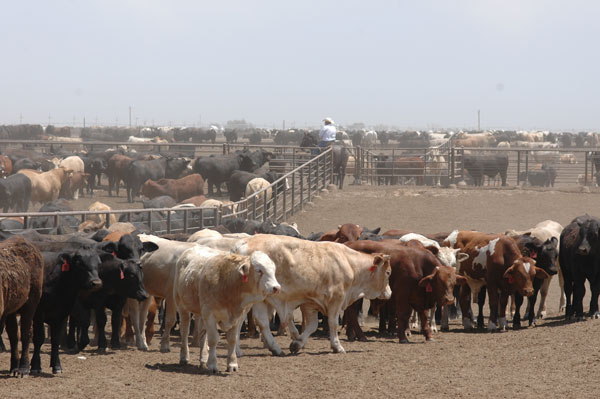Having a breeding plan for your cowherd and sticking to it is the key to genetic success.

“I will tell you this: 13 years in the cattle feeding business will change your mind about genetics, and it will change your perspective about what this country is doing with its genetics. Yes, we have made a lot of progress; but we also have a very, very long way to go.”
That was Tom Brink’s opening statement during the recent Beef Improvement Federation (BIF) meeting in Oklahoma City. Given that BIF is an organization dedicated to improving cattle genetics, the room got a little quieter as folks sat up and paid attention.
Brink, with Five Rivers Cattle Feeding, says their 12 feedyards buy 30,000-40,000 feeders/week and annually market 1.6 to 1.7 million fed cattle, most on a quality-based grid. That, he says, pencils out to about 8% of the industry, “Which is a decent slice and we feel like we see what’s going on in the industry with genetics because of that.” And what they see is not necessarily very encouraging, he says. To illustrate that point, he showed a picture of an “average” pen of cattle. “There are probably some good ones in there, and there are some poor ones in there. On the average, our guys would look at those and say ‘they’re just cattle.’”
Brink says he hears that phrase – they’re just cattle – all the time. “There are too many of those out in the industry, and it’s not just a function of smaller herds.” Showing pictures of individual crossbred steers all from the same herd, he says the top two paid $80-$90 above pen average, while the bottom two were about $200 below the pen average in value.
Is that fixable? Yes, he says, showing a picture of a pen of Angus steers that paid $219/head above the plant average when they were harvested.
Crossbred or straightbred?
Which brings forth the never-ending argument anytime two or more cattlemen get together – is crossbreeding or straightbreeding the better production system? That, Brink says, is not really the question.
“Here’s what I believe after being in feedyards all over this country, and buying cattle all over this country the last 13 years – I’m a friend of anybody out there who has a reasonable breeding plan and sticks to that plan over time. Because I see too many cattle that have no plan behind them, and they cost everybody a lot of money.”
“Plan” is the key word, he says. “Planned crossbreeding, it works. It’s first on the list. There’s a lot of value there if it’s done well. It’s got to be a disciplined, planned process with complimentary breeds,” he stresses. “We don’t need crossbreeding for the sake of crossbreeding. We don’t need crossbreeding for the sake of heterosis only. Heterosis is great, but it can’t stop there.”
However, the same discipline has to be applied to a straightbreeding program. “A well planned, well executed straightbreeding program with today’s genetics, it really can only be done with Angus and maybe Red Angus because of the value in those populations,” he opines. That’s because Five Rivers targets quality grade when it grids cattle.
But done with discipline and a plan, Brink is fine with straightbreds. “If there’s a plan behind the breeding program, the cattle that come to me are not really going to be a problem.”
See Powerpoint presentations and hear audio of many of the speakers during the BIF symposium.
You might also like:
Economists Say There's A Calf Price Rally Ahead
Picture Perfect Summer Grazing Scenes From Readers
Calf Marketing Tools Help Smooth Volatility
Wounded Veterans Find Healing On Texas Ranch
About the Author(s)
You May Also Like
.png?width=300&auto=webp&quality=80&disable=upscale)

.png?width=300&auto=webp&quality=80&disable=upscale)
